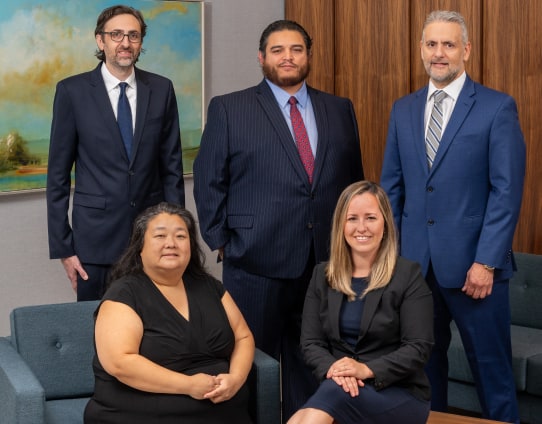Maryland Personal Injury Law Basics: What You Need To Know
Maryland Personal Injury Basics
1. Deadlines – Maryland Statute of Limitations
Maryland law prescribes limitations and deadlines by which personal injury lawsuits must be filed. Failure to comply with the statute of limitations results in a total bar to the claim. The Maryland limitations statute discusses various time limits for various types of lawsuits. Generally, for a personal injury/general negligence lawsuit, Maryland allows three years from the date of the accident to file the claim. See MD Cts. & Jud. Proc. § 5-101. There are several uncommon exceptions to this rule (i.e. for minors or cases involving fraud.) If the claim is against a government agency, there will most likely be more stringent requirements for providing notice to the government entity in order to preserve the claim under a local government tort claims act.
2. Maryland Auto Insurance Rules – Fault-Based Jurisdiction
Unlike many no-fault jurisdictions, Maryland is a “fault-based” jurisdiction. That is, the State has opted for an “at fault” model wherein victims of third-party negligence can assert claims against the at-fault tortfeasor regardless of the amount of their damages or injury. Under this system, anyone that is injured is free to file a claim against their own insurer or the other party’s insurer or even go to court to prove fault.
This means that the injured party can file a claim with their own insurer, the insurer of another driver, or go to court and seek damages by proving the other party was at fault. Maryland insurance law promulgates that drivers must have $30,000 in coverage at minimum (for bodily injury per person). They must also have at least $60,000 in coverage for two or more persons per accident (for bodily injury) and $15,000 in coverage for property damage. There is no requirement that any driver carry Uninsured Motorist coverage. However, absent a valid waiver, uninsured motorist coverage limits are generally assumed to be the same as the liability limits on a policy.
3. Maryland Shared Fault Rules
Maryland recognizes the defense of contributory negligence. This occurs when the injured party is partially responsible for causing their own injuries. In Maryland, contributory negligence prevents the injured party from collecting damage. If a judge or jury finds a Maryland claimant contributory negligent, the finding operates as a total bar to recovery. In practice, when filing a lawsuit or insurance claim due to an accident, it is not uncommon to have the entity or person you are filing against respond by saying that you are partially at fault for the accident. The reason this occurs more frequently in Maryland than in most other States in America is that Maryland has adopted the harsh Shared Fault body of contributory negligence laws. See the case of Schwier v. Gray, 277 Md. 631 (1976)for a more detailed analysis.
It is important to note that the body of case law in Maryland does not concern itself with the amount of contribution of fault by the claimant. Rather, the body of law looks to whether the claimant shares in any amount of fault. The analysis is thus somewhat binary. If it can be said that the claimant shares in any amount of fault as a matter of law, then the claimant is not permitted to recover for his injuries at all.
Example of this in practice: For example, if you are operating a vehicle over the speed limit and another driver hits you and causes an accident that leads to you being injured, contributory negligence might prevent you from being awarded any compensation against the other driver due to the fact that you were technically breaking the speed limit, even if the other driver shares a majority of the fault in the accident. The defendant would need to prove that your contributing negligence was a proximate cause of the harm you sustained. If such a showing were made, your negligence would negate any claim that you bring. Insurance adjusters frequently use contributorily negligence arguments as a basis to deny insurance claims under Maryland law.
4. Strict Liability Laws
While not necessarily pertaining to automobile accidents per se, Maryland does utilize a number of strict liability doctrines in its body of law. For example, with respect to animal negligence cases, Under the Judicial Proceedings Code Annotated Section 3-1901, Maryland adopts strict liability for the owner of a dog that is running at large off-leash. That means that the owner can be held liable for all the damages that arise out of the dog’s unleashed behavior, regardless of whether the owner was negligent in some way. This kind of “Strict Liability” mandates that owners thus keep their dogs on a lease or else face serious consequences if harm is caused as a result of their failure to comply with State statutes. The liable entity is simply liable or “on the hook” for damages that arise out of their actions, regardless of whether such actions can be determined to be negligent or not. Indeed, in some cases, Maryland statutes and case law adopt rules that certain actions, for example, not leashing your dog, shall create presumptions that can be rebutted that operate as a prima facie case of negligence. The Defendant is always free to argue in rebuttal against such a presumption. However, in strict liability scenarios, there is often no such counterargument. Strict Liability laws usually are applied to activities that are deemed inherently dangerous by the legislature.
The most common example of this in Maryland law concerns Maryland Pit Bull Injury Cases. In these cases, Maryland courts have frequently ruled in the past there is no need to show that the owner of the pit bull was either negligent or at fault or even knew subjectively of the dog’s dangerous propensities. Owners of these dog breeds may face liability if their dog causes harm, regardless of whose fault it is. We have previously written about some of the recent changes in Animal Law in Maryland here.
5. Contributory Negligence, Assumption of Risk and Other Legal Defenses
In addition to the contributory negligence defense, another possible defense to a personal injury suit in Maryland is the doctrine of “assumption of risk.” Maryland law holds that a person has assumed the risk of injury when she or he has full understanding and knowledge of an existing danger and voluntarily exposes herself or himself to that danger. So, a successful assumption of risk defense proves that you (the claimant) knew of the risk and danger involved and proceeded anyway. This defense is most commonly encountered in slip and fall cases involving icy conditions, where the claimant voluntarily walks on or near ice and still gets hurt. However, the assumption of risk defenses can apply to all varieties of negligence claims as well, as long as the above criteria are satisfied.
6. Damage Caps
Some states place limits or “caps” on certain types of injury cases or categories of compensation, such as medical malpractice or “pain and suffering”, respectively. Maryland places a cap on non-economic damages in all injury cases. Non-economic damages are damages that cannot be quantified. Lost wages, legal fees, and medical bills are known as economic damages since they can be quantified. Non-economic damages would be injuries such as blindness, paralysis, or loss of limbs.
Maryland places a cap on non-economic damages. Every year on October 1st, the caps change to adjust for inflation. The caps are as follows (From October 1, 2015 – October 1, 2016)
- $2,037,500 for wrongful death, non-medical malpractice, and survival claims with two or more beneficiaries,
- $770,000 limit on medical malpractice injuries that arise from the same incident
- $962,500 wrongful death medical malpractice claims with two or more beneficiaries
- $815,000 for non-medical malpractice injuries that arise from the same incident.
The cap that applies to a case depends on the date of the injury. This is oftentimes the date of the accident.
Getting Legal Assistance in Maryland for Your Personal Injury Claim
If you are involved in an accident, the first thing you should do after seeking immediate medical attention is contact an attorney. Personal injury laws can be complicated and difficult for a layperson to navigate. The body of Maryland tort law is vast, and it is intertwined with civil procedure, insurance law, evidence law, and many other areas of practice. All bodies of law are complex, “living” entities. Laws change with time, with legislation, and with the will of the democratic public. In time, even the above laws and guidelines will most likely become obsolete, overturned, modified, or rewritten. Thus, whenever facing a legal problem, it is advisable to seek legal counsel.



